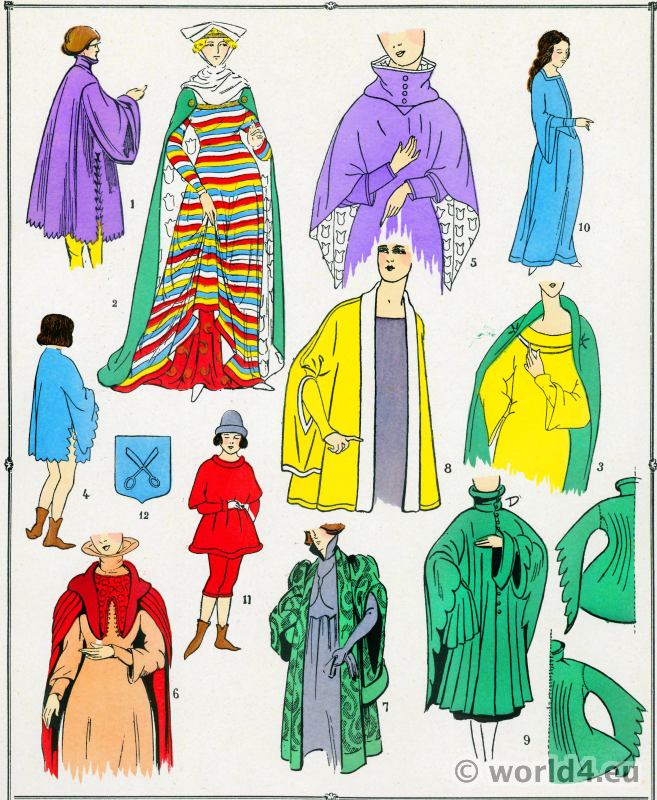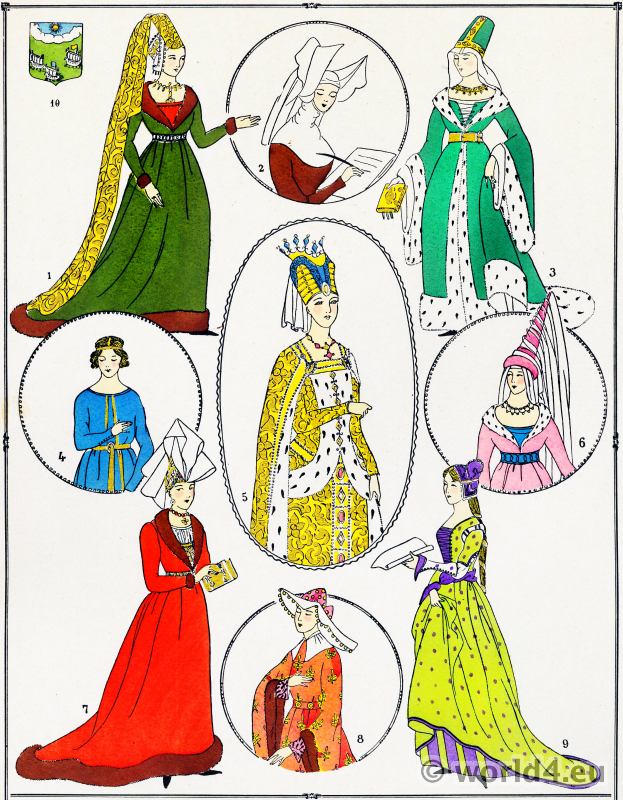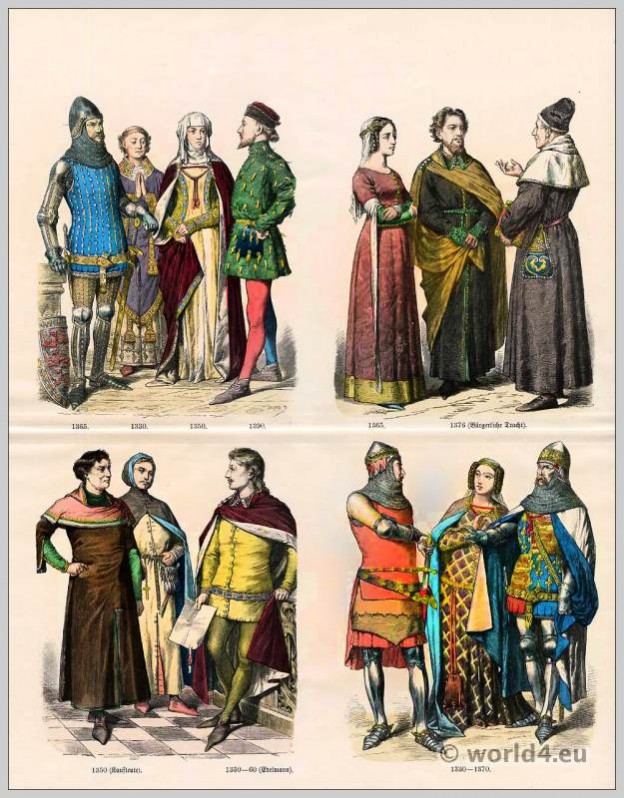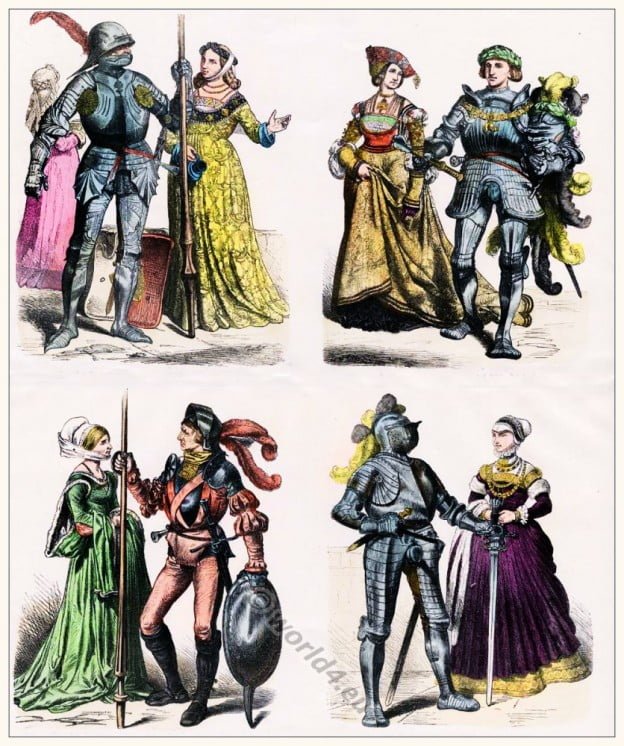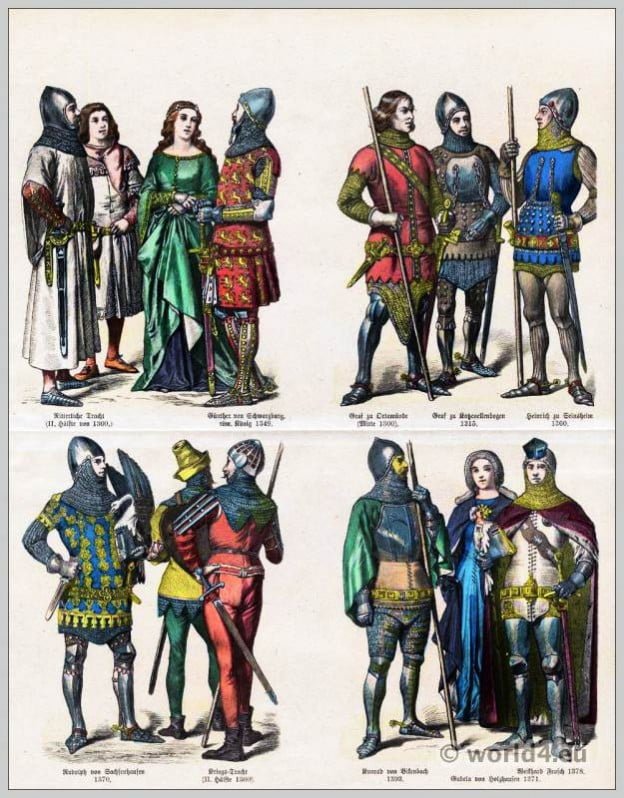Les modes du Moyen Age, de l’an 1037 à l’an 1461. Grand hennin, escoffion, chaperon, Laure de Noves, Marguerite de Provence, Marguerite de Beaujeu
Tag: Gothic costumes
Medieval gothic era. The clothes in the Middle Ages reflected the place of the person dressed in the medieval estate system of Christian Europe again. The color choice was a distinguishing factor between the estates. In the Gothic clothing became increasingly elaborate. The fashions of the early, high and late Gothic differ very much from each other. At the beginning of the early Gothic in the 13th century, the male fashion of female approaches sharply. Both sexes have long outerwear in the form of a so-called Cotte. It predominates initially seem a little form-fitting fashion, showing essentially towering, slim body – a common ground with the gothic architecture.
Manteaux. Les modes du Moyen Age. Costume féminin français.
L’histoire du costume féminin français. Les modes du Moyen Age, de l’an 1037 à l’an 1461. Manteaux. Vêtue d’un bliaut, Houppelande, Robe riche bourgeoise, Mantelet genre Gonnelle, Déshabillé, Bannière des Couturières.
Robes. Les modes du Moyen Age. Costume féminin français.
L’histoire du costume féminin français. Les modes du Moyen Age, de l’an 1037 à l’an 1461. Robes. Cotte hardie, Houppelande avec chaperon, Femme élégante sous Charles VIII, Pelicon, Renaud de Saint Vincent,
Elegance. Fashion in the Middle Ages. French women’s costumes.
The Elegance of French women’s costumes. Fashion in the Middle Ages, from 1037 to 1461.
Medieval clothing in France. 11th to 13th century.
In France, as in Germany, the dress of the eleventh century was a development from the fashions of previous periods, though here the change was accomplished more quickly.
Medieval English fashion. 14th century costumes. Gothic era.
Medieval English fashion. 14th century costumes.
Italian fashion history of the 14th and 15th century.
In the fifteenth century Italian dress exhibited the same variety as that of France, England, and Germany. In Italy, as in other countries, numerous enactments were promulgated with the object of restraining the ever-increasing luxury in attire, but these were just as unsuccessful in Italy as elsewhere.
German fashions of the 14th century.
German fashions during the fourteenth century. The dress in Germany underwent the same transformation as in France.
German knights and nobel women 15th Century.
German knights and nobel women German fashion in the XV. and XVI. Century. Upper half of the image on the left: German knights and wife 1450. Right: German Prince and Princess… Read More
German Medieval costumes 14th Century.
German Medieval costumes 14th Century. Top row left: Knightly costume second half of the 13th Century. Günther von Schwarzburg. Nobles lady. Roman King 1349. Right: Count to Orlamünde middle of… Read More


